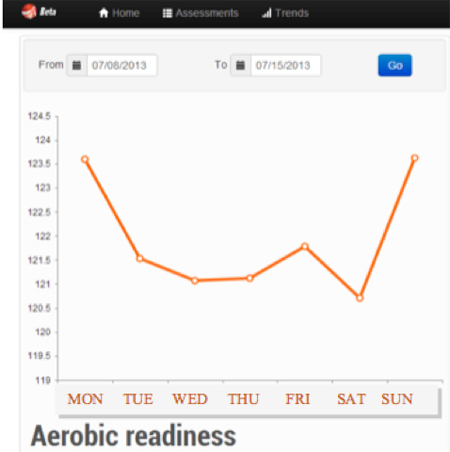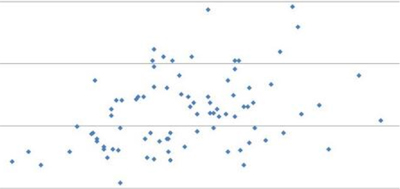You are looking at points on a graph. Numbers ascend one axis, dates cross the other, and to make sense of the plotting you connect the dots into a landscape of rises, dips, and plateaus. To understand the meaning of that picture, first you have to recognize the relevant terms and parameters. To go forward and apply that understanding, you need to trust that each point serves as a precise marker of what it claims to represent.
While contributing to the decades of proprietary research that form the basis of Omegawave, our Senior Research Scientist Roman Fomin (PhD, Physiology) is also committed to establishing a body of accessible data that reflects the accuracy and practical implications of Omegawave’s readiness model. Conducting a recent case study, Fomin tracked an individual’s adaptational changes in readiness during one week of high-intensity resistance training.
The subject? Himself.
“I was interested in being involved in applied science, not just basic science, and the Omegawave technology is very useful for coaches and athletes instead of just being used in a lab,” Fomin says. “During my career as a sports scientist, I’ve often used methods and technologies first on myself.”
Fomin’s method was to establish a rigorous training schedule from Monday through Wednesday – curls, crunches, push-ups, squats, and presses – performing each exercise to a max-out, burning sensation. On Thursday he engaged in a moderate, recuperation-based regimen of cycling and planks, returning to another day of high-intensity lifts on Friday.
“Many recreational athletes and professional athletes want to use high-intensity training to improve their fitness level,” says Fomin, defining his own approach as one that blends Eastern and Western science while accommodating both traditional and modern training concepts. “The main idea is to stay in the optimal level of your functional state: not higher, not lower, not bad, not good, but an optimal level of readiness and functioning.”
During his one-week “micro-cycle,” Fomin devoted the weekend days to recovery activities, with an extended session in the sauna on Saturday and long stretch of biking on Sunday.
Taking daily measurements with the Omegawave Pro Mobile App (fifteen minutes after waking up, before eating breakfast), Fomin encountered certain expected results: the high-intensity training loads on Monday through Wednesday significantly taxed his cardiovascular and nervous systems, producing measurable stress on his body and a significant decline in aerobic readiness.

Following the resumption of high-intensity activities on Friday, however, Fomin measured corresponding improvements in his Stress Index, Recovery Pattern, and DC Potential (the brain’s capacity to address stimuli and activity), gains that reflect the work being done by his body’s compensatory systems as it adapted to the intense training load.
“(Omegawave’s) strength is that we are able to collect daily information and therefore we are able to identify short-term adaptational changes,” Fomin says. “Tracking and trending parameters is a more effective way to understand adaptational changes in the body compared to lab testing.”
Perhaps most importantly, following Saturday’s recovery activities and a return toward baseline levels, on Sunday Fomin’s DC Potential was at an improved level over his original Monday measurement, indicating the progress made in his overall fitness level as a result of the intense week of training. Fomin has also generated data for a three-week training cycle, and plans to continue stimulating the discussion on how an integrated assessment of readiness can be used in order to target training peaks, avoid injuries, and maintain a general level of good health and fitness.
“We are able to provide unique information previously unavailable about how different components of the training process impact overall performance,” Fomin says. “Using our technology, we are able to understand the language of our body and understand the reactions of our body to different types of stress and therefore manage them.”
